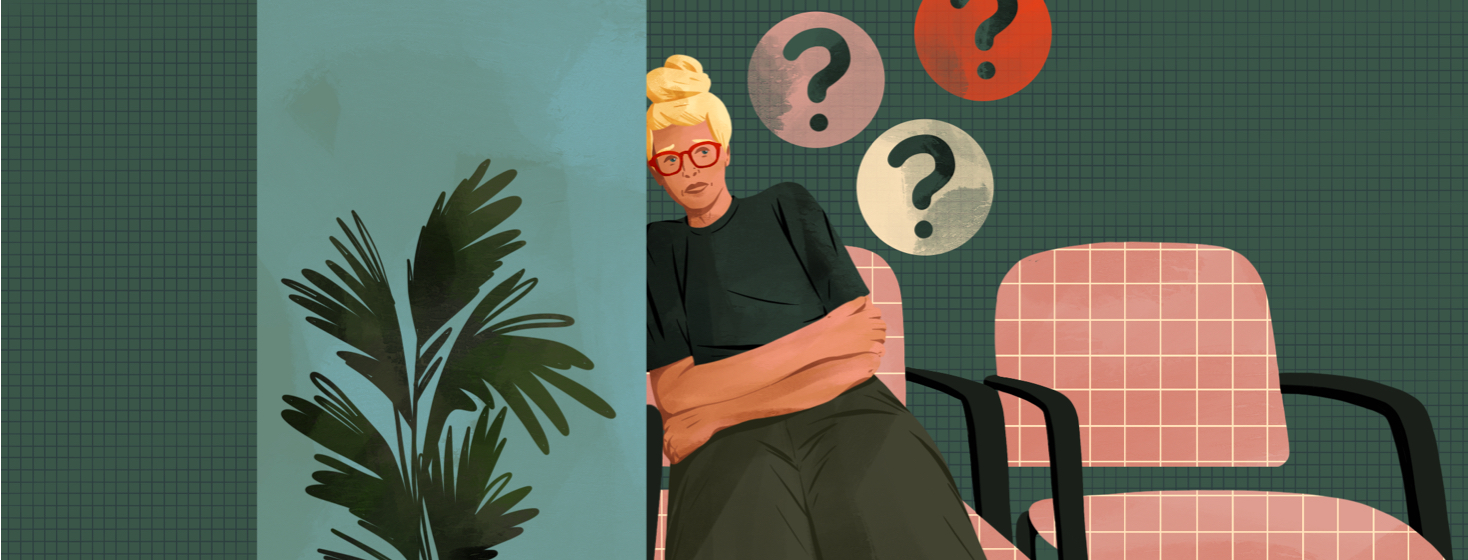Could I Have Ehlers-Danlos Syndrome?
Editor's note: If you think you have EDS, please consult your doctor.
Earlier this year, another endo warrior suggested I may have Ehlers-Danlos Syndrome (EDS). She'd read some of my articles and said my symptoms sounded like they fit with the condition. Some other community members have also written about having EDS.
So, I did a little digging to find out more about EDS for myself.
What is Ehlers-Danlos Syndrome?
It's not a disease, but a group of inherited connective tissue disorders. It happens when there's a defect in your collagen.
That's a protein vital to the structure of our tendons and the tissue that supports everything from our skin and bones to our internal organs.1
Collagen holds a lot of stuff together. If it doesn't work the right way, you can have mild issues like stretchy skin or joint hypermobility and instability.
Rarely, when EDS weakens your blood vessels, you can have life-threatening problems with your heart or intestines.1
Is EDS common in people who have endometriosis?
The research that I found is mixed on this. Some studies saw no relation.2 Others found that almost 30% of people with EDS also had endo.3
Though the vast majority of people with EDS have painful intercourse (dyspareunia) and painful periods (dysmenorrhea).4
Why do I think I might have EDS?
I've never really considered EDS in the past because I'm not very flexible. But according to some online physical tests, I'm hypermobile in certain ways that I read might be common among people with EDS, including:
- Spine I can put my hands flat on the floor without bending my knees.
- Tongue I have something called Gorlin's sign. That means I can touch the tip of my tongue to my nose. That shows up in 10% of the general public but 50% of people with EDS.5
- Thumb I can bend my thumb back to touch my wrist.
- Other joints I can't do a lot of crazy yoga poses, but I can do reverse prayer. That means I can put my palms together behind my back with my fingers pointing up. Some researchers think this may be a less common sign of EDS.6
I also have joint instability. Sometimes my right knee gives out for no reason. My shoulders and elbows slip in and out of place with certain activities, like lifting weights or doing push-ups.
Some yoga poses are also problematic. My knees and hips have always "cracked."
This is so loud that everyone in my ballet class in high school could hear it when I'd plié. So, I can't blame those pops solely on age.
Here are some symptoms that overlap with EDS:7
- Muscle tension
- Stretchy skin in certain places
- Pain and early fullness with eating
- Blood pressure and heart rate issues
- Temperature regulation problems
- Mast cell activation syndrome (MCAS)
My joints hurt ofter working out
The best way to prevent a problem is to know what's causing it. I can't figure out why my workouts cause so much pain.
But I know that people with EDS often have certain kinds of exercise intolerance. Over the past several years, I'll get joint pain and muscle soreness after I work out, especially with weights.
Certain stretches also make everything worse.
It should be noted that I'm not new to exercise; I've been active my entire life. I also don't push way past my limits, meaning my soreness can't be blamed on working out too hard.
I didn't know just how much my twice-a-week strength training was hurting me until after my excision surgery earlier this year. I was forced to put down the weights for almost a month.
Much of my constant soreness disappeared, only to resurface as soon as I got back to the gym.
I'm hoping an EDS specialist can tell me if my unstable joints are part of the problem. I'm also hoping they can set me up with a physical therapist who'll teach me how to exercise without so much pain.
Talking to my doctor about EDS
I told my primary doctor I'd like to get assessed and treated for possible EDS back in March. She sent my referral to a specialist covered by my insurance.
I secured an appointment. They said I could see the EDS specialist in June.
Of 2022.
You read that right. I'll have to wait more than a year for someone to check for the possibility that I have EDS.
Which means I won't get treated before then. Like endo, this delay makes me wonder if this condition isn't as rare as doctors say it is.
There are just not enough people to diagnose it.

Join the conversation